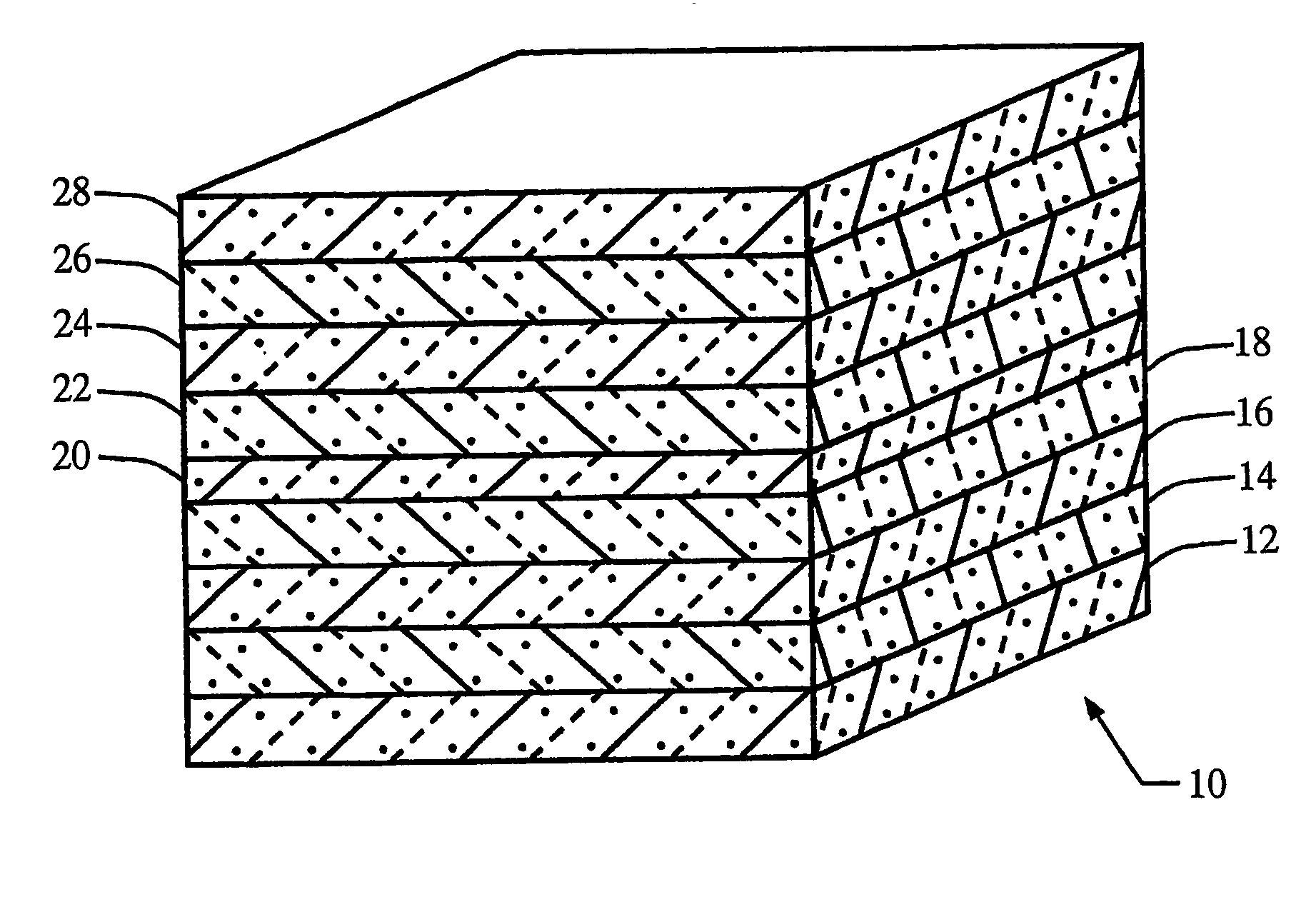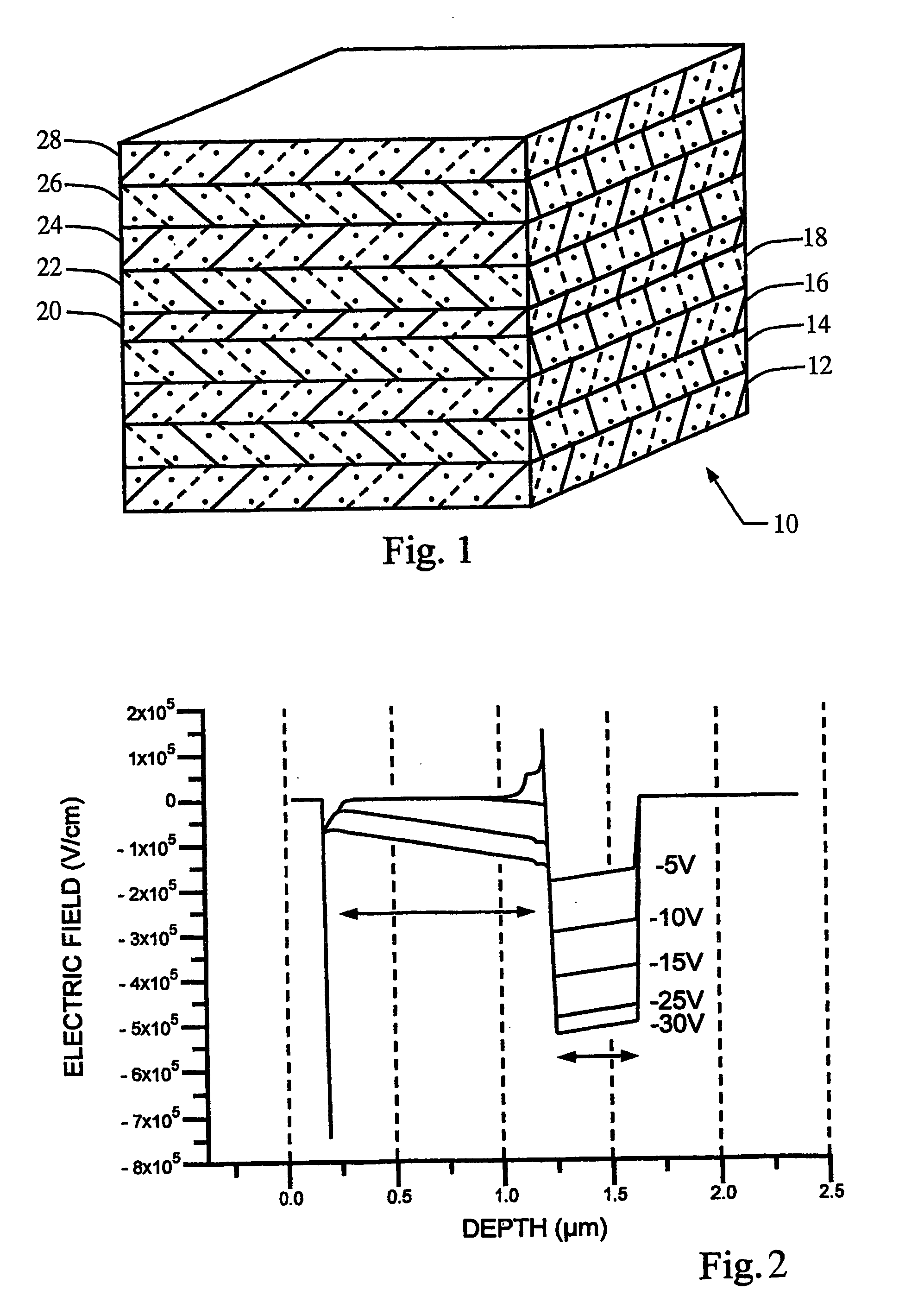Charge controlled avalanche photodiode and method of making the same
a photodiode and avalanche technology, applied in the field of electromagnetic avalanche photodiodes and a method of making the same, can solve the problems of requiring a relatively thick charge control layer, adversely affecting the bandwidth of the device, and reducing the efficiency of the method, so as to prevent the breakdown of the charge carrier, reduce the risk of becoming saturated, and improve the effect of the charge control layer
- Summary
- Abstract
- Description
- Claims
- Application Information
AI Technical Summary
Benefits of technology
Problems solved by technology
Method used
Image
Examples
Embodiment Construction
[0010] In accordance with a preferred embodiment of the present invention, an epitaxial structure is provided for photoconductive purposes. The photoconductive structure is an avalanche photodiode (APD) that is optimized for increased performance through a charge control layer. The particulars of the structure and method of manufacture of the present invention are discussed further herein.
[0011] Referring to FIG. 1, a perspective view of a charge controlled APD 10 is shown in accordance with the preferred embodiment. A substrate 12 is provided as a base upon which the epitaxial structure is deposited. The charge controlled APD 10 of the present invention may be manufactured in a number suitable fashions, including molecular beam epitaxy and metal organic vapor phase epitaxy.
[0012] The substrate 12 may be composed of a semi-insulating material or alternatively the substrate may be doped Indium Phosphate (InP). A buffer layer 14 is disposed above the substrate 12 to isolate any stru...
PUM
 Login to View More
Login to View More Abstract
Description
Claims
Application Information
 Login to View More
Login to View More - R&D
- Intellectual Property
- Life Sciences
- Materials
- Tech Scout
- Unparalleled Data Quality
- Higher Quality Content
- 60% Fewer Hallucinations
Browse by: Latest US Patents, China's latest patents, Technical Efficacy Thesaurus, Application Domain, Technology Topic, Popular Technical Reports.
© 2025 PatSnap. All rights reserved.Legal|Privacy policy|Modern Slavery Act Transparency Statement|Sitemap|About US| Contact US: help@patsnap.com


